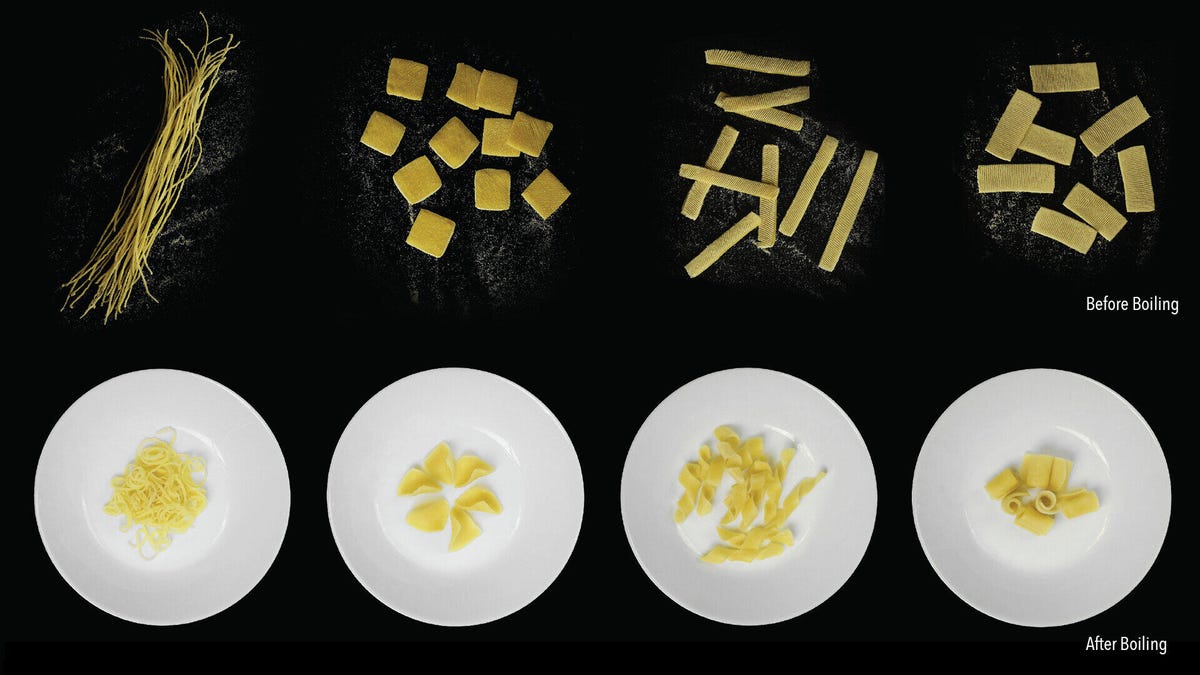This strange, flat pasta transforms into 3D shapes as you cook
Carnegie Mellon University researchers are playing with their food.

The new pasta starts out flat, but plumps into shapes when it cooks.
Maybe food can be fun.
A paper published Wednesday by Carnegie Mellon University researchers revealed a new variety of pasta that starts out flat, but -- incredibly -- transforms into unique, 3D shapes after being boiled for seven minutes. But beyond the shape gimmick, the pasta is unique in other ways: it requires less packaging, creates a smaller carbon footprint, and cooks faster than regular dried pasta.
How does it work? Well, machines press tiny grooves into flat pasta dough made of semolina flour and water. Those grooves form patterns that react with the hot cooking water and turn the flat noodles into waves, tubes, spirals and other shapes. But since it's flat when boxed up, it doesn't need as much packaging and storage space as already 3D noodles would require. That could make it useful in a number of places where space is at a premium, including disaster sites, or even astronauts in space stations.
One of the new pasta varieties, shown both before and after boiling.
And as for the inspiration for this sci-fi food? You might have to thank furniture makers such as IKEA.
"We were inspired by flat-packed furniture and how it saved space, made storage easier and reduced the carbon footprint associated with transportation," said researcher Lining Yao. Oh, the pasta-bilities.

